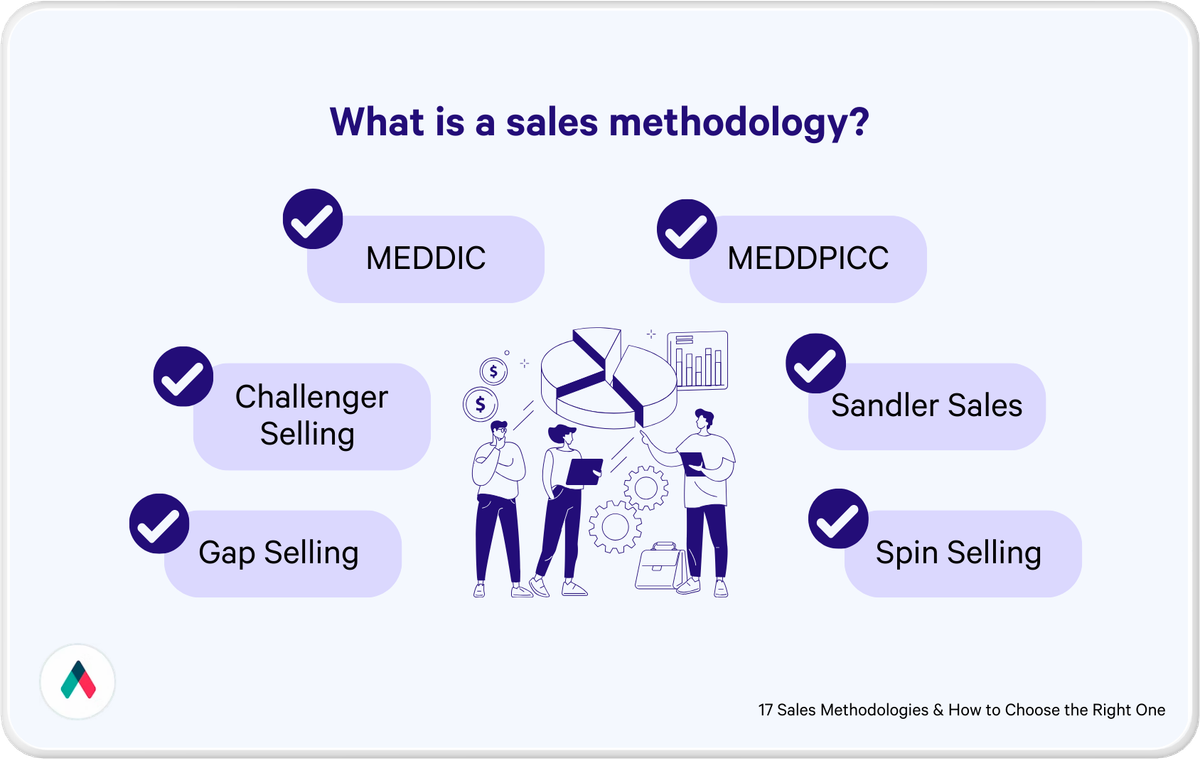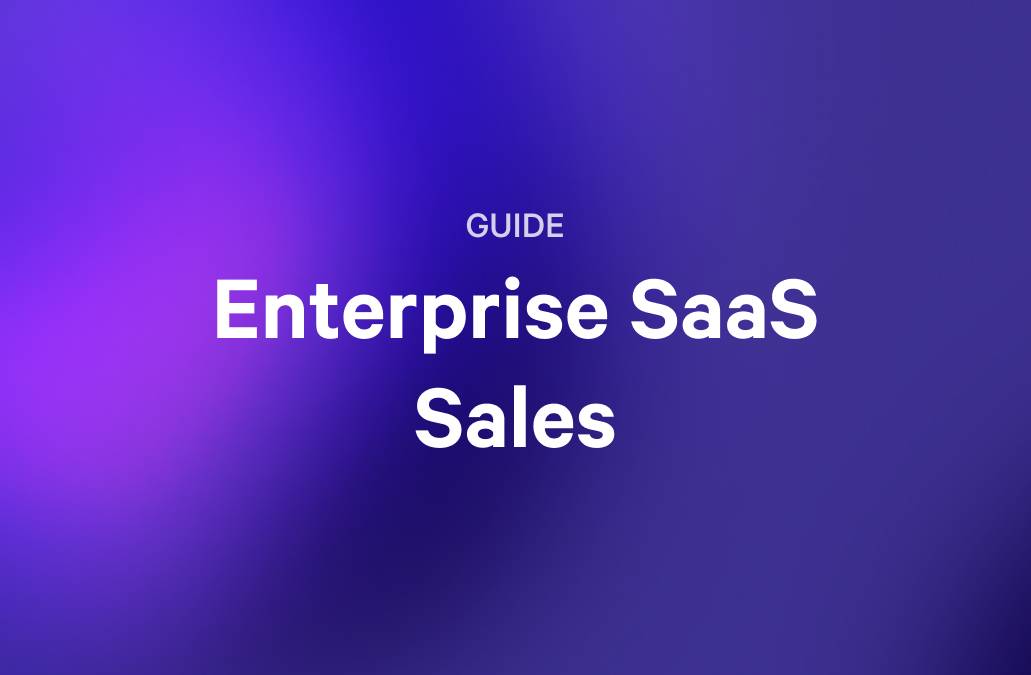The digital revolution has had a profound impact on how we communicate with one another. In the last two decades we’ve seen physical mail fall by the wayside as email volume has shot through the roof. Inbox zero may be a distant memory. Phone calls have shifted to texting and DMs and its rare to see younger generations even use their phones for talking.
These shifts in how we communicate with each other, is being felt in how we communicate in a business setting too. While this shift may not have been as fast, its definitely taking hold. Remote work, virtual meetings and signing up for text messaging from suppliers is definitely becoming more pervasive.
Adapting to these changes involves embracing virtual selling best practices, which can enhance your sales strategy in this digital age.
There was a time when sales meant cold calls, knocking on doors, and handing out printed business cards at networking events. A scattershot approach. A numbers game. But with so many of our interactions online nowadays, buying behavior has changed, and selling behavior has to change to keep up. “Social selling” is one aspect of this shift.
If the term social selling is new to you, or you haven’t developed a social selling strategy yet, that’s okay. Learn more about the benefits of social selling and how you can leverage these techniques in your own business.
What is social selling?
Social selling is the process of connecting with prospects and customers via the social media channels that house so much of our modern interactions.
Social selling isn't about bombarding strangers with unsolicited sales pitches; it's a strategy where salespeople use social media to engage and interact with their prospects directly. Think of it as the modern way to develop meaningful relationships with potential customers so you're the first person (or brand) that comes to mind when they're further along the sales process, ready to make a purchasing decision.
Unlike traditional sales methodologies, which were often characterized (rightly or wrongly) as pushy or aggressive, social selling is about building genuine connections. It revolves around nurturing leads through sharing relevant content, answering questions, and providing value at every touchpoint. Instead of pitching products or services upfront, you establish trust and credibility by actively listening, engaging, and positioning yourself as a thought leader.
In the age of informed buyers who prefer to do their own research and seek peer recommendations, social selling ensures that you're not just another faceless company but a valuable partner and resource in their decision-making journey.
Why is social selling so effective?
The power of social selling lies in its alignment with today's sales environment and buyer behavior. Let's unpack the benefits of social selling and the reasons for its effectiveness:
Buyer's behavior has changed
Gone are the days of one-way marketing messages. With social media, review sites, and online communities, today's buyers can research, compare, and seek recommendations long before interacting with sales. It's all just a scroll and a click away. They often clearly understand what they want, and they value brands that respect their informed approach. In short, they no longer need a salesman; they need an advisor.
Social selling establishes trust
Trust is a crucial component in the sales process. Through social selling, salespeople consistently share helpful content, answer queries, and participate in discussions. Over time, this consistent value-driven approach positions them as experts in their respective domains. When prospects see you offering this guidance and buyer enablement without an immediate expectation of a sale, it fosters a sense of trust.
Helps you stay top-of-mind
The digital world is noisy. You ensure your brand remains at the forefront of prospects' minds by being active and engaged on social platforms. Whether it's a valuable article you shared, a comment on a recent industry development, or a quick response to a question, these interactions collectively keep you present in the minds of potential buyers.
Leverages warm connections
A cold call can be a shot in the dark, but reaching out via a mutual connection on LinkedIn or a shared group on Facebook instantly adds credibility. This 'warm' introduction means the prospect is more likely to engage in a conversation, as trust and commonality are already established.
Personalizes the buyer's journey
Social media profiles often provide insights into a prospect's interests, challenges, and needs. Your sales team can use this information to tailor their outreach and conversations, ensuring they address the unique needs of each prospect. This level of personalization can make the sales process more resonant and effective.
Reduces sales cycle time
With real-time interactions on social platforms, sales reps can immediately address objections, provide clarifications, and offer solutions. This immediate feedback loop can expedite decision-making, shortening the time from a lead to a converted sale. For more insights on improving this process, check out our guide on sales cycle stages and learn how to effectively shorten the sales cycle.
Enhances collaboration
Platforms like LinkedIn not only connect salespeople with prospects but also with other industry professionals. This community fosters a space for sharing best practices, insights, and strategies, providing salespeople with diverse perspectives and techniques to help refine their approach.
Social selling taps into the power of community, trust, and personalized interaction, making it an indispensable strategy for modern B2B sales success.
10 principles for effective social selling
Social selling is more than just using social media platforms for lead generation; it's about leveraging them to foster genuine relationships with prospects and customers. Here are some foundational principles to ensure your social selling strategy bears fruit:
1. Listen actively
Before jumping in with your pitch, spend time listening. Understand the conversations that are happening in your industry, identify common pain points, and observe what content your prospects engage with. Active listening helps tailor your approach and offer solutions that truly resonate.
2 . Be genuine and authentic
People can sense inauthenticity from a mile away, especially online. Don't be a brand that only talks about itself or makes every interaction about a sale. Show genuine interest in others, engage in conversations without hidden agendas, and be true to your brand's voice.
3. Provide value consistently
It's not just about sharing your own content. Curate and share insightful articles, industry news, and resources your audience finds beneficial. Position yourself as a helpful resource rather than a salesperson.
Think of your role on social media more as a curator. Share your thoughts on articles and tell your audience why you’re choosing to share that specific piece of content. This may be more time-consuming than just throwing up a link every day, but the extra effort will pay off as you give people more insight into how you think and approach business.
4. Personalize your outreach
Generic messages rarely get noticed. Use insights from social profiles to tailor your outreach. Mention a recent post they made or an interest you both share. Make them feel you've taken the time to understand them. A little effort here can go a long way.
5. Engage, don't broadcast
Social selling isn’t about broadcasting your sales message. It’s a two-way street. Engage in conversations, ask questions, comment on posts, and foster genuine interactions. As with any other type of conversation, if you’re simply looking for places to throw out your sales pitch, it will show.
6. Build and nurture relationships
Remember, not every interaction will result in an immediate sale. Some interactions won’t result in a sale at all. And that's okay. The goal is to build and nurture relationships that could lead to opportunities. Social selling is a long-term play with long-term results. Even if not everyone you engage with consistently is a potential client, you never know who might be listening or send a solid piece of business or a career opportunity your way.
7. Leverage testimonials and case studies
Sharing case studies or testimonials from satisfied clients can be influential. It showcases your credibility and the tangible benefits of your product or service. Part of your social selling strategy may be to expand on these testimonials and share the story of how you or your company helped, how you made decisions together, or any other ‘behind the scenes’ information that might pique a potential customer's interest.
8. Keep your profile (and what you share) updated and relevant
The digital landscape and industry trends evolve rapidly. Continually educate yourself and stay up to date. This ensures you're always providing your prospects with the latest insights and solutions. In the past, generic but seemingly personalized outreach was the norm on many social networks. You may have even gotten a few messages like, “Hi Name, I see we have many connections in common, so I thought I should introduce myself.” Or, “Hi Name, I am so impressed with your career path and accomplishments as a seller; I hope you’ll accept my invitation to connect on LinkedIn.”
Neither of these are specific or share who the common connections are, or what was so impressive, but it looks like the person took the time to do some research before reaching out. And chances are that they didn’t. Today, it takes more to stand out and have your connection request accepted.
Beyond that, keeping your profile up to date and highlighting your accomplishments is more important than ever. LinkedIn and many other social networks give you the opportunity to share projects, publications, and awards. Make sure you’re taking full advantage of these features.
9. Respect Privacy
While social media platforms provide access to a wealth of information, always respect people’s privacy boundaries. Use; don’t abuse.
If you’re sharing information about a customer interaction or a common mistake people make, do so in a way that doesn't break confidentiality, and never share proprietary information about your company or an existing customer or prospect’s organization.
You also want to make sure you aren’t identifying customers or embarrassing anyone with the content of your posts.
10. Measure and adjust
Like all sales strategies, tracking your social selling efforts is essential. Use analytics to measure engagement, conversions, and other relevant metrics. Continuously refine your strategy based on these insights.
By adhering to these principles, you won’t just be selling; you’ll create lasting relationships and position your brand as the trusted advisor the modern B2B buyers look for.
Which platforms should you use for social selling?
While the core tenets of social selling can be applied across various social media platforms, it's essential to understand which social networks align best with your B2B objectives. Here's a breakdown of the most effective platforms for social selling:
Why it's essential: LinkedIn, ‘the professional network,’ is arguably the gold standard for B2B social selling. With its vast network of professionals, industry-specific groups, and company pages, it's a platform primed for establishing business connections and building relationships. The social network is over 20 years old and boasts an incredible 930 million members.
How to use it: Share insightful pieces of content like articles, case studies, and webinars, and participate in group discussions. When prospecting for new business, you can leverage LinkedIn's advanced search for targeted outreach and filter members by geography, job title, company, and more. If you want to invest more in the platform, you can also use LinkedIn Sales Navigator to gain deeper insights into leads (and increase your ability to personalize your outreach).
X (Twitter)
Why it's essential: X's (still often referred to as Twitter) real-time nature makes it perfect for timely engagements, sharing news, and participating in industry-specific conversations. In addition to prospecting for new business, X allows customer success and customer support professionals to provide support when needed most. This can help with both customer retention and upselling opportunities in the future.
How to use it: Monitor brand mentions, engage with industry hashtags, share valuable content, and use the Direct Message functionality for more in-depth one-on-one interactions with prospects.
Why it's essential: Often considered the original social network, Facebook primarily serves a B2C user base. But, that said, professionals in your industry are likely to use it personally and informally. Facebook Groups can be particularly valuable for niche industries.
How to use it: Join industry-specific public or private Facebook groups, share value-driven content on your business page, and use Facebook Ads to target specific demographics.T ry scheduling reels on Facebook to reach a wider audience with no effort of manually publishing video content.
Why it's essential: While Instagram might seem unconventional for B2B, its visual nature can showcase your company culture, behind-the-scenes, and product demos effectively. For physical products like office furniture or breakroom supplies, these visuals, captions, and video formats, like reels, can bring products and offerings to life.
How to use it: Share compelling visuals, use stories for real-time updates, engage with users through comments, and leverage Instagram's 'Swipe Up' feature for sharing content.
Why it's essential: For industries where visuals play a significant role (e.g., design, architecture, event planning, e-commerce), Pinterest can be a goldmine for showcasing portfolios.
How to use it: Create themed boards relevant to your industry, pin high-quality visuals, and collaborate with industry influencers for shared boards. In addition to social selling, in certain industries, Pinterest may be a bigger part of the overall marketing strategy. It can be used to drive traffic to a website or online shop.
Quora
Why it's essential: Quora isn't a traditional social media platform, but its Q&A nature makes it a powerful tool for establishing authority in your field.
How to use it: Answer industry-specific questions, share insights, and engage with other experts in your niche. It can also be a good place to engage with prospects at both the top and bottom of the sales funnel.
Remember, while these platforms offer vast opportunities, focusing on the ones where your target audience spends the most time is vital. Spreading yourself too thin can dilute your efforts. Instead, master one or two platforms first, then expand based on results and bandwidth.
The four best plays for getting started with social selling
Now you know the benefits, the principles, and the best platforms, these four plays will kickstart your social media strategy.
1. Harness the power of AI-driven social listening
AI-driven social listening moves beyond simple brand mentions. It delves into sentiment analysis, predictive analytics, and forecasting, offering a deeper understanding of brand and industry perception.
Utilize platforms like or, which integrate AI capabilities. Instead of merely tracking mentions, gauge the sentiment behind them. Refine your approach in real-time based on these nuanced insights, ensuring your social selling always aligns with the current sentiment.
2. Master the Art of Personal Video Messaging
Amidst a barrage of text-based outreach, personalized video messages are memorable. They add a personal touch to the digital realm, enhancing the trust-building process.
Leverage tools like or Loom to craft short, personalized video introductions or responses. Embed these in your social messages- on LinkedIn or other platforms - offering a refreshing break from standard text pitches.
3. Implement Account-Based Marketing (ABM) on Social Platforms
Typically seen in email campaigns and website personalization, ABM can be powerfully tailored for social media. You can achieve higher engagement and conversion rates by targeting specific accounts or leads with personalized content on social platforms.
Identify key accounts and research their pain points and interests. Curate or create content specifically addressing these points and use platform-specific targeting tools to ensure this content reaches the relevant decision-makers.
4. Engage in Niche Social Communities
Beyond mainstream platforms, niche social communities or forums can be treasure troves of insights and deep conversations. Engaging here can position you as an industry expert and help you understand unmet customer needs or emerging trends.
Identify niche forums or communities related to your industry. Platforms like Reddit, specialized industry forums, or Clubhouse rooms can be ripe for genuine interactions. Listen, engage, and share your expertise without overtly kick-starting the selling process.
Incorporating these advanced strategies into your social selling playbook can give you a significant edge, ensuring that your approach is not only state-of-the-art but also deeply rooted in understanding and addressing the needs of your prospects.
The top tools you need for social selling
While the heart of social selling lies in genuine engagement, authentic relationships, and offering real value, having a reliable toolkit can empower those endeavors and help you use your time more strategically. These tools can supercharge your social selling, provided they're used with the right intent:
LinkedIn Sales Navigator
- This is a premium tool that elevates the LinkedIn experience for sales professionals. Advanced search filters, lead recommendations, and insights make it invaluable for B2B selling.
- Identify and engage with potential new leads more effectively, stay informed about key company changes, and foster relationships through informed interactions.
Hootsuite or Buffer
- These platforms streamline social media management, allowing for content scheduling, monitoring mentions, and analyzing performance across multiple channels.
- Maintain a consistent presence on social platforms, respond timely to interactions, and adjust your strategy based on performance analytics.
Vidyard or Loom
- As mentioned earlier, personalized video messaging can set you apart. These tools make creating, sharing, and tracking video messages a breeze.
- Craft tailored video pitches or responses, seamlessly embed them into emails or social messages and analyze viewer engagement for continuous improvement.
Brandwatch
- This AI-powered tool offers deep insights into social listening and sentiment analysis, helping you gauge brand perception and industry trends.
- Understand the sentiment behind brand mentions, identify emerging trends, and tailor your social selling approach to resonate with real-time sentiments.
Nimble
- Nimble is a CRM designed with social selling in mind. It integrates with social media profiles, giving you rich insights about contacts directly within the CRM.
- Enhance lead and customer profiles with social insights, streamline follow-ups, and nurture relationships more effectively by leveraging social touchpoints.
Remember, always prioritize genuine engagement and relationship-building over automation. These tools are here to support, not replace, the human touch that makes social selling truly effective.
FAQs
What are the four pillars of social selling?
The four pillars of social selling serve as the foundation for any successful strategy. They are:
- Establishing a Professional Brand, i.e., a well-managed LinkedIn profile
- Finding the Right People
- Engaging with Insights
- Building Strong Relationships
At its core, social selling is about cultivating relationships. This involves consistent engagement, understanding prospects' needs, and fostering trust over time.
Does social selling really work?
When done correctly, social selling can be a game-changer. Studies have shown that sales professionals who leverage social selling techniques are more likely to outperform their sales peers with a lower social selling index (ssi).
What are the three C's of social selling?
The three C's offer a concise framework for understanding the essence of social selling:
- Content
- Connection
- Consistency
While these guidelines provide a roadmap, it's the genuine intent, authenticity, and effort from social sellers that truly drive success.
Building your social selling skills
In this digital age, where screens often increasingly depersonalize our interactions, social selling reminds us of the importance of genuine relationships. It's not about aggressively pushing a product or service but understanding, engaging, and adding value.
The technology and tools serve as enablers, but the heart of the process lies in authenticity, empathy, and expertise. While everything around us is changing, in sales at least, that old maxim still rings true: people buy from people.
Building a winning social selling strategy that helps you leverage available social channels to connect with others takes time and patience. Trying new things and evaluating results will help you hone in on the type of activities that move the needle for you.
While Qwilr's proposal tool is designed to create proposals, it can also help you with social selling! Create and share collateral with your social audience in minutes. When you get to the point where you need to create a fully customized proposal for a customer, our proposal template library will help you get that set up and sent out in minutes. Want to see it in action or try it for yourself? Book a demo or score a 14-day free trial!
About the author

Marissa Taffer|Founder & President of M. Taffer Consulting
Marissa Taffer is the Founder & President of M. Taffer Consulting. She brings over 15 years of sales and marketing experience across various industries to a broad range of clients.


